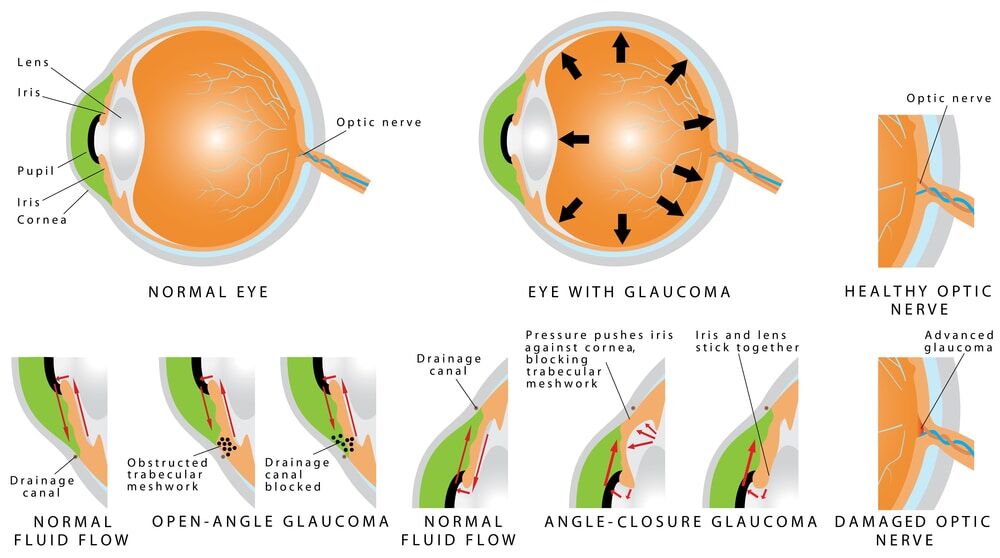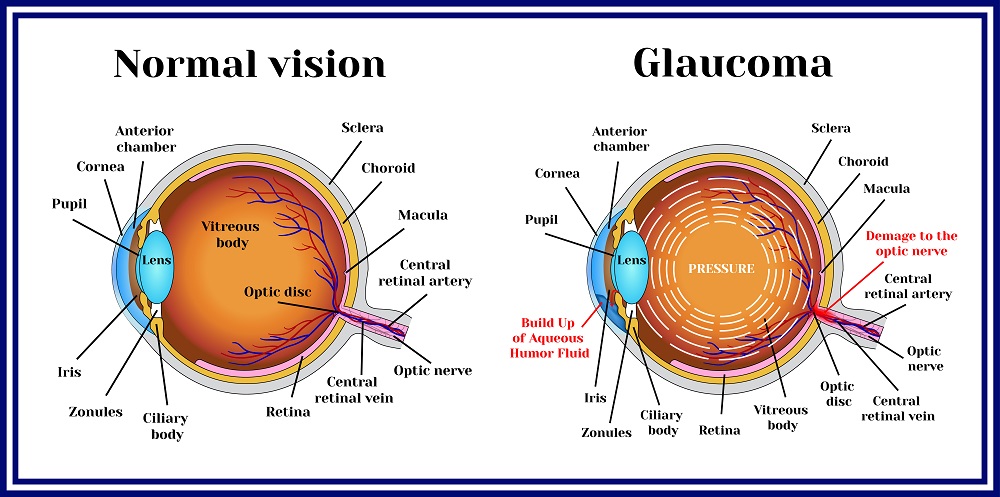Regional Glaucoma Service Near Me: Early Detection and Treatment Options
Regional Glaucoma Service Near Me: Early Detection and Treatment Options
Blog Article
Recognizing the Different Vision Correction Procedures Available for Clearer Sight
In the realm of vision modification treatments, a wide range of choices exist to resolve refractive mistakes and offer individuals with more clear sight. From the extensively recognized LASIK surgical treatment to less intrusive procedures like PRK and implantable lenses, the area of ophthalmology supplies a series of techniques customized to match various needs and choices. Each procedure features its own collection of considerations, advantages, and prospective risks. Comprehending the nuances of these vision adjustment techniques is important for making informed choices about one's visual wellness. Allow's discover the details of these procedures and shed light on the course to attaining boosted vision quality.
LASIK Surgical Procedure
LASIK surgical treatment is a common refractive treatment made use of to deal with vision issues such as farsightedness, nearsightedness, and astigmatism. This medical strategy, which stands for Laser-Assisted in Situ Keratomileusis, aims to reshape the cornea to boost how light is focused on the retina, ultimately improving vision clarity.
Among the primary benefits of LASIK surgical procedure is the quick enhancement in vision experienced by patients. Lots of individuals discover a substantial enhancement in their eyesight immediately after the procedure. In addition, many individuals report marginal discomfort and discomfort during the surgery and healing period. The recuperation time for LASIK is fairly quick, with numerous people returning to their daily activities within a day or 2 post-operation. On the whole, LASIK surgical treatment is a prominent option for individuals looking for a lasting remedy for their vision problems.
PRK Procedure
While additionally an usual refractive procedure, the PRK (Photorefractive Keratectomy) method varies from LASIK surgery in its method to fixing vision problems. In PRK, rather than producing a flap on the cornea, the external layer of the cornea, called the epithelium, is completely gotten rid of. This permits the laser to reshape the cornea to remedy refractive errors such as farsightedness, nearsightedness, and astigmatism directly on the surface area.

Regardless of the longer recuperation time, PRK can yield superb lead to vision improvement, making it a beneficial alternative for those that might not appropriate prospects for LASIK surgical procedure.
Implantable Lenses
In comparison to PRK where the cornea is improved directly, implantable lenses provide an additional approach for correcting vision by inserting fabricated lenses inside the eye. This treatment is specifically advantageous for individuals with high degrees of nearsightedness, astigmatism, or farsightedness that may not be appropriate candidates for laser surgical procedures like LASIK or PRK.
Implantable lenses, also referred to as phakic intraocular lenses, work by supplementing the eye's natural lens with an artificial one. glaucoma service near me. These lenses can be put in front of the all-natural lens (former chamber) or behind the iris and in front of the all-natural lens (posterior chamber) By changing the power and positioning of these lenses, eye doctors can properly remedy refractive mistakes and boost visual skill
One benefit of implantable lenses is that they are exchangeable and removable, giving adaptability for future modifications. As with any type of surgical procedure, there are threats involved, such as infection or cataract development. Individuals taking into consideration implantable lenses ought to talk to an eye treatment specialist to figure out one of the most suitable choice based upon their specific requirements and eye health.
Corneal Rings
Corneal rings, likewise referred to as intracorneal ring sectors, are tiny, clear devices inserted right into the cornea to fix vision distortions such as keratoconus. Keratoconus is a condition where the cornea thins and protrudes external, causing vision to become altered. The insertion of corneal rings assists to squash the cornea, improving visual acuity and decreasing the irregular astigmatism triggered by keratoconus.
The treatment for putting corneal rings check that is minimally invasive and fairly fast, often performed as an outpatient procedure. During the surgery, the ophthalmologist makes a tiny laceration in the cornea and inserts the rings at a particular deepness. When in place, the rings aid to improve the cornea, providing a smoother surface for light to go into the eye, which can lead to clearer vision.
Corneal rings are thought about a reversible procedure, as they can be eliminated or changed if required. refractive surgeries in al. While they might not entirely eliminate the requirement for glasses or call lenses, corneal rings can significantly enhance vision quality and overall aesthetic convenience for individuals with keratoconus or other corneal abnormalities
Refractive Lens Exchange
Following the modification of corneal abnormalities with treatments like corneal rings, one more vision adjustment technique that can deal with refractive mistakes is Refractive Lens Exchange (RLE) RLE is a procedure that involves changing the eye's all-natural lens with a man-made intraocular lens (IOL) to deal with refractive errors such as nearsightedness, presbyopia, and farsightedness. This procedure is specifically helpful for people that might not be suitable prospects for procedures like LASIK or PRK as a result of elements such as thin corneas or high refractive errors.

Final Thought
To conclude, there are various vision modification treatments readily available to assist people attain more clear sight. LASIK surgical treatment, PRK procedure, implantable lenses, corneal rings, and refractive lens exchange are all alternatives that can resolve different vision issues. It is essential for people to consult with their eye care supplier pop over to these guys to establish one of the most suitable procedure based on their particular demands and choices. With innovations in modern technology, attaining improved vision is now much more easily accessible than in the past.
In the world of vision adjustment treatments, a wide variety of alternatives exist to address refractive mistakes and supply people with clearer view.LASIK surgical procedure is an usual refractive treatment used to remedy vision troubles such as nearsightedness, astigmatism, and farsightedness.While also a typical refractive procedure, the PRK (Photorefractive Keratectomy) method differs from LASIK surgical procedure in its strategy to fixing vision issues.Complying with the adjustment of corneal irregularities with procedures like corneal rings, another vision correction technique that can address refractive errors is Refractive Lens Exchange (RLE) LASIK surgery, PRK procedure, implantable lenses, corneal rings, and refractive lens exchange are all alternatives that can resolve various vision problems.
Report this page